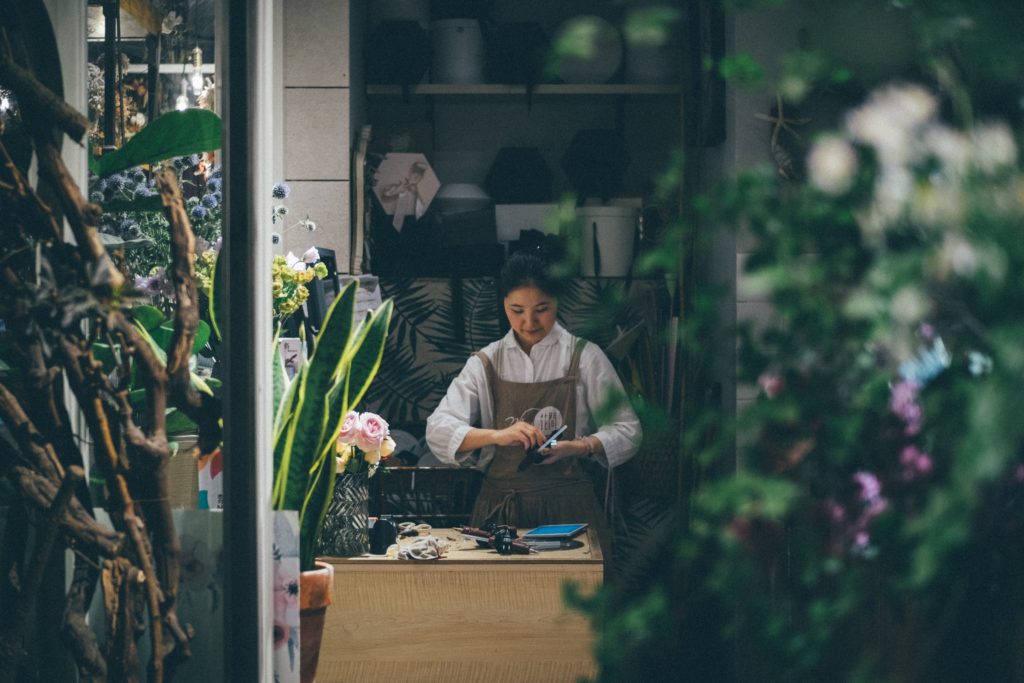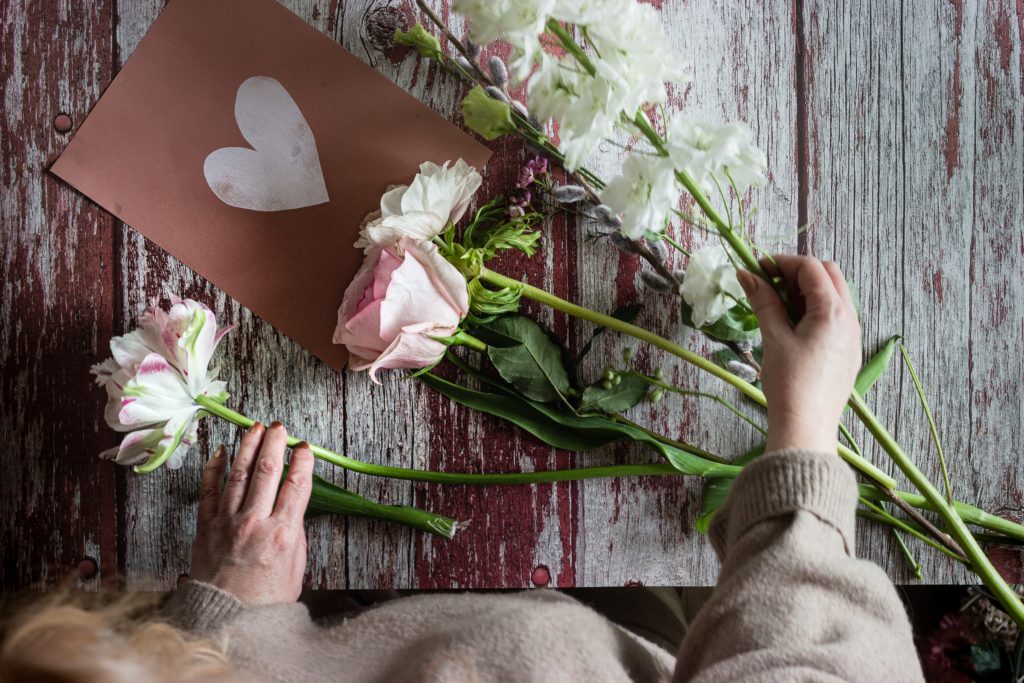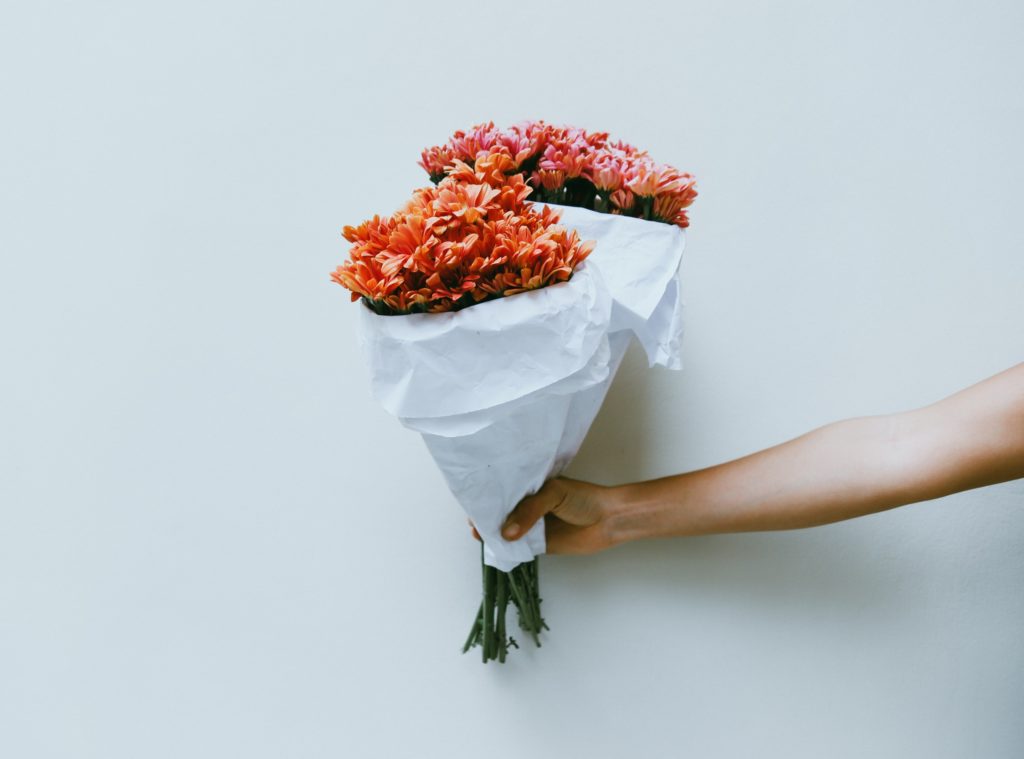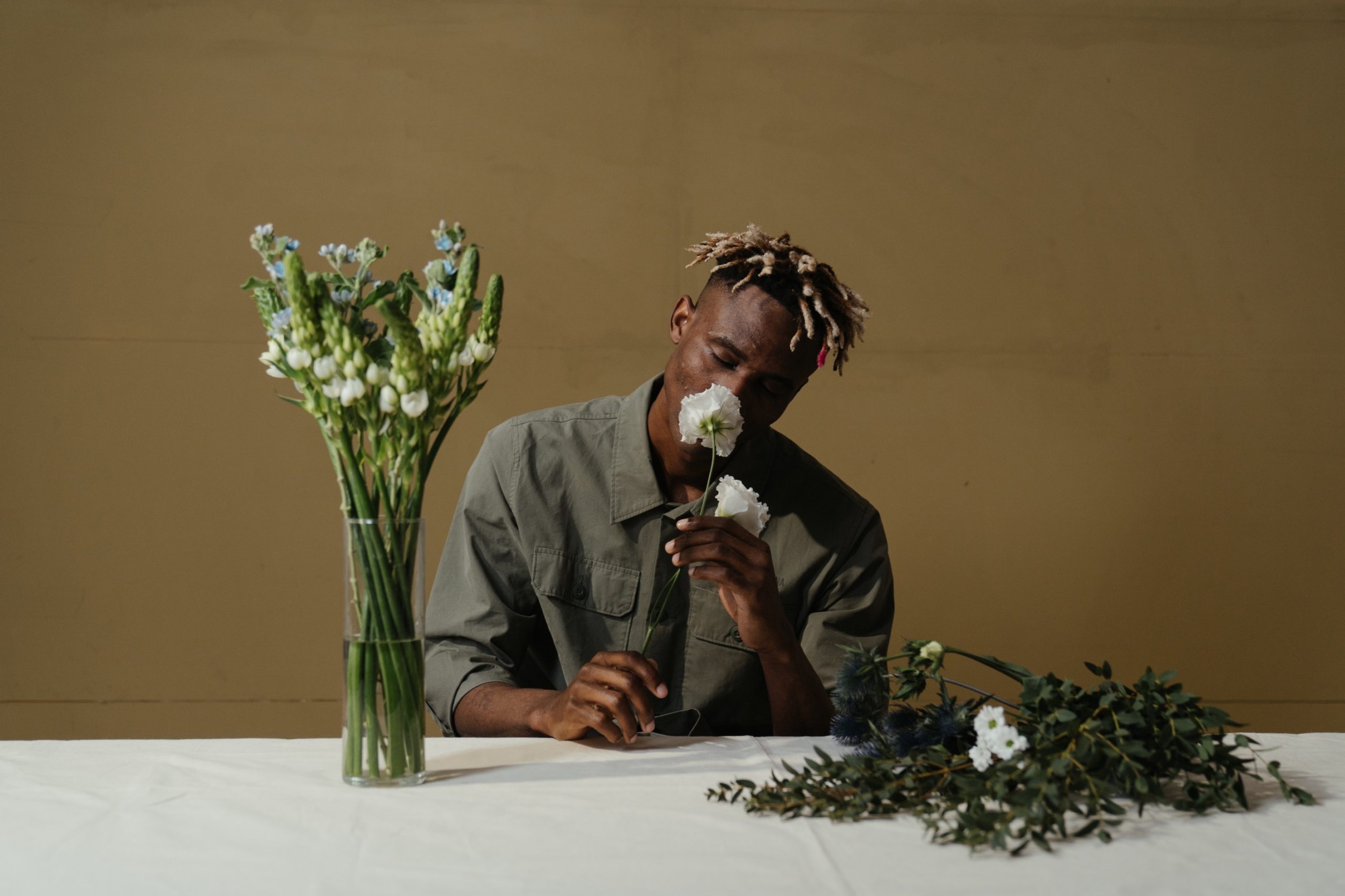Contents
Part 1 – Introduction to the Power of Flowers
This is a four-part series on DIY flower arrangements and the mental benefits of floral therapy.
・Part 1 – Introduction to the Power of Flowers
・Part 2 – Floral Healing through Preparation
・Part 3 – The Art of Ikebana
・Part 4 – The Meditative Reflection of Flower Petal Mandalas

Floral Therapy for Better Well-Being
Most people would be delighted by bright-colored flower bouquets from a loved one. Simple fresh-cut flowers on a cafe table is an appreciated touch, and the beautiful blooms in the wild adding a pop of color in nature can be a blissful sight. Whatever the form, flowers have had the power to boost our moods with its color, scent, shape, and liveliness. As we’ve mentioned in our other post, No More Drowsiness at the Desk! Benefits of Greening the Office, keeping live indoor plants can have numerous benefits on our creativity, task performance, and overall well-being. Yes, of course, live plants include flowers too! Some flowers even have amazing scents used in aromatherapy, which studies say relieves anxiety, depression, and insomnia. The physical body use of flower arranging tasks activates the upper limb muscles and can be a helpful rehabilitation exercise as well.
What if the process of bringing these flowers into your home and arranging them gave you that extra push towards a happier state? In this four-part series, I will introduce ways to maximize your DIY flower arrangement activity as a therapeutic experience with floral therapy.

Increasing Interest in Flower Arrangements as Floral Therapy
Flowers have been used in many spiritual rituals throughout history since ancient Eygpt as a means to connect with nature and the gods or as a way of expression for special occasions. As for examples today, we see marigolds brightly decorating altars for the Day of the Dead in Mexico, or daily flower ‘offerings’ made to the Gods in front of every building in Bali, Indonesia. The common thread of sacredness or spirituality of flowers and some of these ritual practices are associated with mindfulness.
History of Flower Arrangements
The oldest known book on flower arrangments is from ancient Japan, dating back to 1445, known as ikebana. Ikebana, still to this day, remains a popular art form practiced internationally. Extensive science on the therapeutic effects of flower arranging is just starting to emerge. We can trace back floral therapy and psychology starting 2008 in Japan when the Institute for the Psychological Study of Human Flower Relations was first founded. By 2011, the proper use in therapy spread as Floral Therapy or Hana (Japanese word for ‘flower’) Therapy. The concept is to use the five senses of visual, sound, smell, taste, and touch as you handle the flowers. They categorize the healing effects of floral therapy into three main parts; color therapy through visual stimulation, aromatherapy through scent, and the act of arranging as creative art therapy.
Given the strong evidence of physical and mental benefits from initial research, The Ikebana Therapy Scientific Society was founded in 2019. Their mission is to further conduct specialized research on the therapeutic qualities of Japanese flower arrangements. In Western culture, explicit research on floral arrangements tend to get categorized into horticultural therapy, a broader study of floral therapy through gardening and plant-based activities. Just recently as 2018, Floral Healing Therapy (FHT) was created in the U.S. for the first time as a new therapeutic modality that utilizes flowers. This is a specialized session you go through with a therapist as you talk and arrange flowers as a way to heal. We are in an exciting phase where more research and studies on flower arrangements are about to come out!

Now that we have some background knowledge of the potential healing effects of flower arrangements and floral therapy, the next step is to prepare for this DIY activity. Up next in Part 2, we will talk about Floral Healing through Preparation of our flowers!
→ Looking to improve your mental health? Try the SELF MIND app FREE for 1 week!
If you’re looking for more tips on how to care for your mental health, check out some of our past blog posts!



